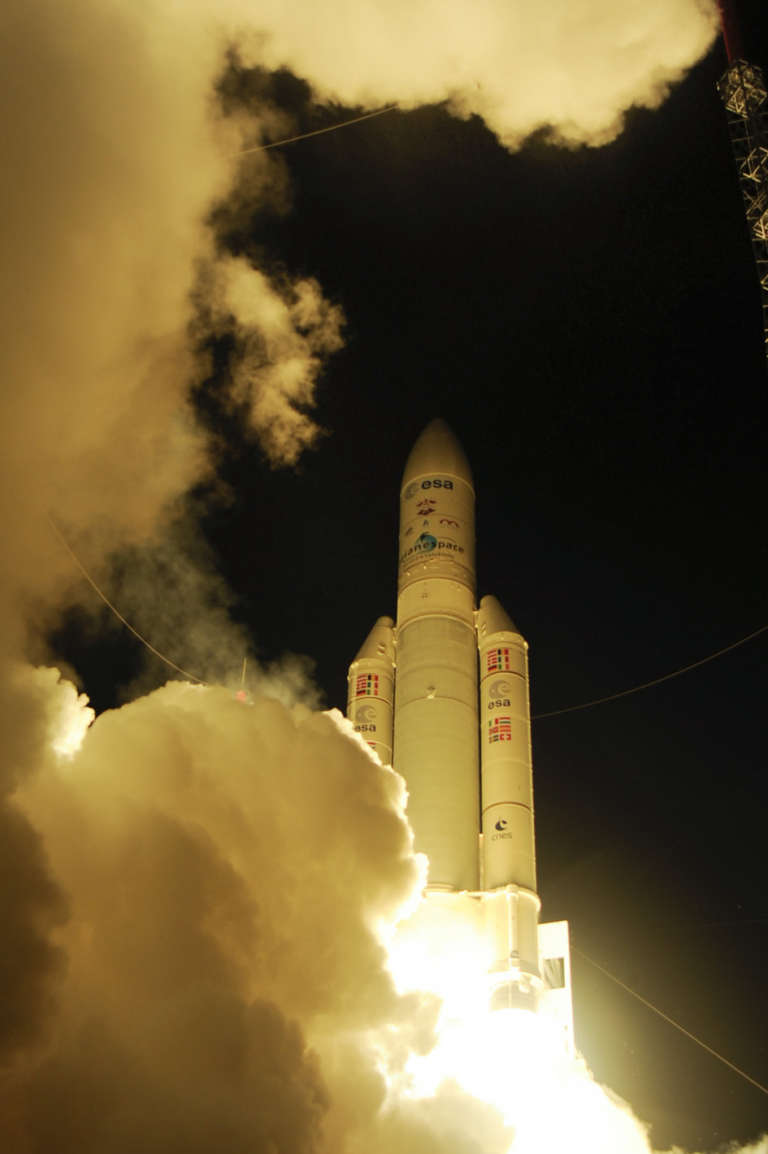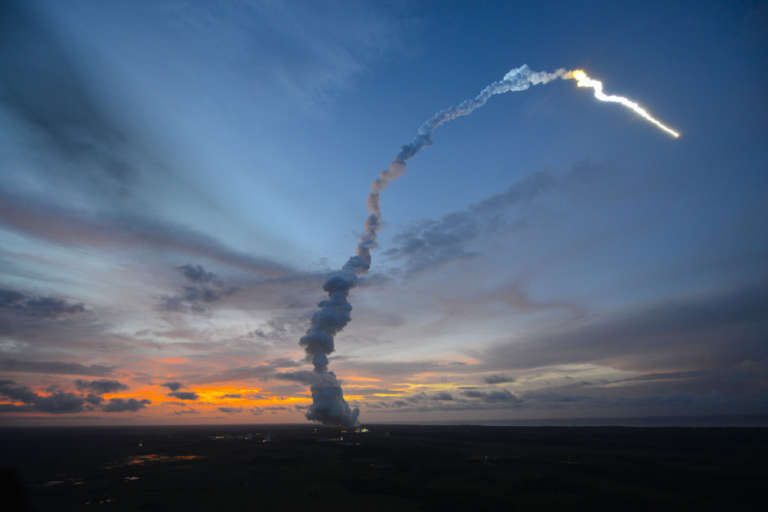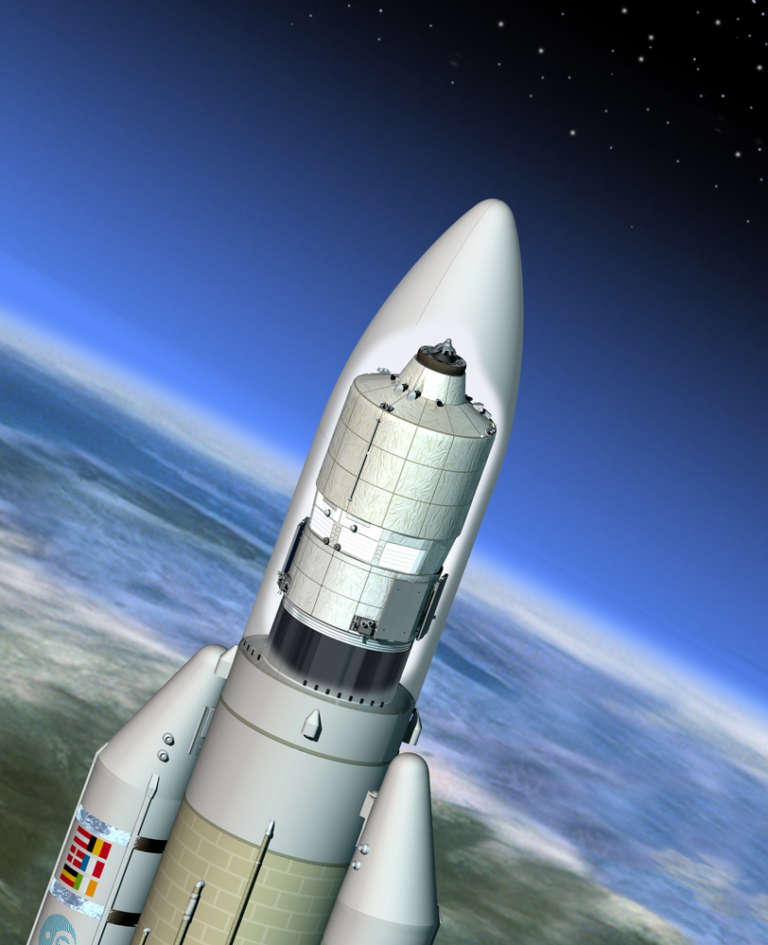Jason Davis • Jun 06, 2013
ESA launches fourth cargo spacecraft to ISS
The European Space Agency launched its fourth Automated Transfer Vehicle, Albert Einstein, into orbit yesterday atop an Ariane 5 rocket. ATVs are Europe’s resupply vehicles for the International Space Station. The Albert Einstein, or simply, ATV-4, is the heaviest payload ever launched by an Ariane 5, tipping the scales at a whopping 20,190 kilograms—narrowly beating out the weight of ATV-3 by about 150 kilograms. Bundled up inside ATV-4 is 2,480 kilograms of dry cargo, along with 2,580 kilograms of fuel for boosting the station’s orbit, 570 kilograms of water and 100 kilograms of air and oxygen.

Here’s a video of the launch. If you speak French, you’ll be able to follow the countdown of trois-deux-un-zéro. Or, if you’re like me, you can just look up how to speak zero through ten in French. The launch site is in Kourou, French Guiana—a South American country north of Brazil on the Atlantic Coast. Ariane rockets and launch operations are handled primarily by French companies.
Notice how the Ariane 5’s Vulcain 2 core engine doesn’t roar to life until after the clock hits zero. Liftoff occurs when the two solid rocket boosters comprising the EAP (Etage d’Accélération à Poudre) stage ignite. When Ariane finally leaves the pad, it leaves in a hurry—did you notice how fast it cleared the tower? Sacrebleu!

The Albert Einstein won’t dock at Station until June 15. There’s something in its parking spot at the moment: a Progress resupply vehicle. Progress M-19M is scheduled to undock on June 11. It created a little drama when it arrived on April 26 with one of its antennas stuck in the wrong position. There was concern that the antenna might whack a critical Station component; particularly, a set of laser reflectors that ATVs use to dock. Progress will snap photographs as it leaves so ground controllers can check for damage.
Unlike JAXA’s HTV, SpaceX’s Dragon or Antares’ Cygnus resupply spacecraft, which sidle up to the station to be snagged with Canadarm, ATV and Progress vehicles dock at the Russian Zvezda segment. ATVs establish a direct GPS link as they approach, and then use a videometer for docking. As they creep up to the docking port at seven centimeters per second, ATVs bounce laser pulses off of the aforementioned reflectors to refine their aim. Those measurements are supplemented by readings from a telegoniometer, which works like radar. As a result, ATVs dock with incredible precision, within 1.5 centimeters of their target.



 Explore Worlds
Explore Worlds Find Life
Find Life Defend Earth
Defend Earth

